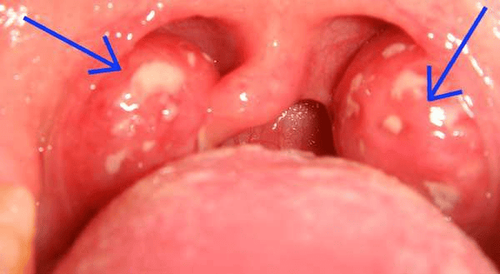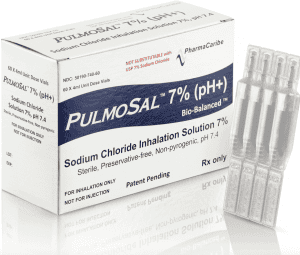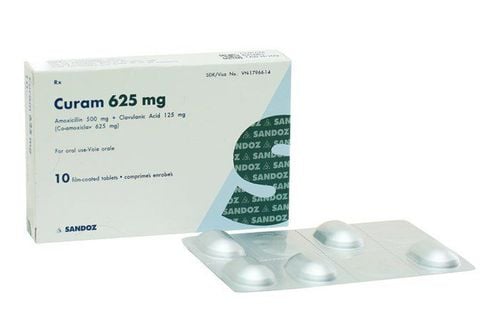This is an automatically translated article.
Inflammation of the tonsils will cause the tonsils to swell, which can block the upper respiratory tract, making breathing difficult, thereby affecting your daily life.1. What is aggravating tonsillitis?
Tonsillitis is a condition of the tonsils that are acutely inflamed but are not treated promptly and properly, leading to chronic inflammation of the tonsils. Repeated and prolonged disease makes the tonsils more swollen than the underlying structure.Excessive tonsillitis can occur in many different subjects from children to adults. This condition can also appear on one or both tonsils, so it is also called unilateral or bilateral aggravating tonsillitis.
Symptoms of tonsillitis include:
The tonsils are inflamed and swollen like two almonds on both sides of the throat wall, encroaching inward, narrowing the throat cavity, red anterior pillars. Sore throat, uncomfortable feeling like something is inside. The enlarged tonsils obstruct the upper respiratory tract, causing snoring, restless sleep, even sleep apnea, and at the same time making abnormal pronunciation, difficulty swallowing, and delayed physical development. matter. Tonsillitis that is too large will make it difficult for children to eat, eat slowly or children will stop eating, making the body tired. Children often have a dry cough that lasts a long time, coughs at night, and bad breath. Excessive tonsillitis is divided into 4 different levels, specifically as follows:
Acute tonsillitis 1: The tonsils are usually swollen, round and compact. At this stage, the tonsils are very small in width, accounting for less than 1/4 of the distance between the base of the tonsils in front of the tonsils. Acute tonsillitis 2: Tonsillitis is swollen and round like in grade 1, but is larger in width, but still less than 1/3 of the distance between the anterior pillar of the tonsil. Acute tonsillitis 3: This is the severity of the disease, causing many uncomfortable symptoms. At this stage, tonsillitis is less than or equal to 1/2 the distance of the anterior ulnar foot. Tonsillitis grade 4, also known as sclerosing sclerosus: The disease is progressive and is more common in adults. At this stage, the inflammation is raised and raised to the surface, the tonsils are dark red, and the posterior column is thicker.
2. What is the cause of tonsillitis?
Due to bacterial and viral attack: Some bacteria or viruses have the ability to attack and cause tonsillitis such as: Adenoviruses, Parainfluenza virus, streptococcus, Parainfluenzae virus,... Due to the structure of the tonsils: The normal structure of the tonsils has cavities, allowing food and bacteria and viruses to get trapped during eating. Therefore, it is necessary to clean the mouth and throat every day to prevent recurrence of the disease. The weather changes suddenly: The climate changes erratically, especially during the changing seasons, the body cannot adapt quickly, so it is easy to damage the tonsils leading to inflammation. Effects of other respiratory diseases: People who have had respiratory diseases such as flu, whooping cough, measles, ... will have a high risk of tonsillitis if not properly cared for. Cold body: Regularly eating cold food or letting the body get cold due to weather and air conditioning is also the cause of tonsillitis. Other causes: Some other causes can cause tonsillitis, such as poor nutrition, poor immune system, dusty living environment,...
Viêm amidan quá phát là tình trạng của amidan bị viêm sưng phồng hơn cấu trúc bình thường
3. Why does tonsillitis cause difficulty breathing?
When inflamed, tonsils will always be red and swollen many times larger than normal. You will always feel sore throat, discomfort, feel short of breath, snoring occurs more frequently.The reason why tonsillitis is too much to cause breathing difficulty is because when it is inflamed, the tonsils will swell, compressing the throat, preventing air from flowing through the pharynx. In addition, bacteria that attack the tonsils also attack the nose area, causing rhinitis and nasal congestion, making it difficult to breathe.
Excessive tonsillitis causing obstruction of the upper respiratory tract is an extremely dangerous disease. Patients need to detect the signs of the disease quickly to receive timely treatment, to avoid dangerous complications later. Obstruction of the upper respiratory tract causing difficulty breathing will cause you to lose sleep, snore, affect sleep quality, leading to body weakness. More dangerously, you may face sleep apnea that can occur at any time. More seriously, tonsillitis can also lead to tonsil abscess, sinusitis, rhinitis, acute and chronic nephritis.
4. How to treat enlarged tonsils causing obstruction of the upper respiratory tract
If tonsillitis is so severe that it causes mild shortness of breath, it can be treated with medication. But when the disease is severe, the inflammation of the tonsils is prolonged, the tonsils are swollen and there is pus, then surgery to remove the tonsils is necessary.Currently, the most advanced treatment for tonsillitis is tonsillectomy. The doctor will remove the tonsils to open up the airway. Cases requiring tonsillectomy include:
Recurrent tonsillitis more than 5 times/year. Tonsillitis causes complications such as bronchitis, glomerulonephritis, myocarditis, arthritis,... The enlarged tonsils cause airway obstruction, difficulty swallowing, difficulty speaking, snoring or even sleep apnea. . For children, the most suitable age for tonsillectomy is 4 years and older. Removing tonsils when the child is too young can affect the child's immunity. However, in the case of children with sleep apnea, they need to have their tonsils removed at any age to avoid the risk of sudden death due to lack of oxygen.
To be able to overcome the enlarged tonsils causing difficulty breathing in time, you need to do the following things:
When you find it difficult to breathe due to the enlarged tonsils, you need to lie down with a higher pillow to make it easier to breathe. You should sleep in a well-ventilated room, do not use air conditioners or electric fans. Because air conditioning can make tonsillitis worse and more dangerous. Clean teeth, gargle and gargle with physiological saline or a specialized solution to fight inflammation and prevent bacteria from entering. You should drink a lot of water, eat soft and easy to swallow foods so as not to affect the tonsils, not to block the airway. Do not eat hot, spicy, cold foods, ice cream, ice... because they damage the lining of the throat, the enlarged tonsils causing difficulty breathing will be more severe and dangerous. Do not smoke, do not drink alcohol and do not use stimulants. Limit exposure to polluted air, wear a mask when going out. Keep the body warm, especially the throat area when it's cold. If you have shortness of breath, feel short of breath, have respiratory failure, or chest tightness, you should immediately go to the hospital for a prompt examination.

Viêm amidan quá phát gây khó thở
5. Home remedies for tonsillitis that cause difficulty breathing
To be able to reduce the swelling of tonsils that make it difficult to breathe, you can apply the following home remedies:5.1. Deep breathing exercises Deep breathing exercises are used in the treatment of respiratory diseases, help relieve stress, enhance lung function, improve breathing ability. You need to do deep breathing for at least 10 minutes a day to relieve the pain and make breathing easier.
Steps to perform deep breathing are as follows:
Step 1: Lie on your back on the floor or a flat surface like a bed, place your hands on your stomach, and relax your whole body. Step 2: Perform inhalation through the nose, until the abdomen swells. Step 3: Next, hold your breath for about 5 seconds. Step 4: Then, slowly pull your belly in and exhale through your mouth until you run out of air in your lungs. Repeat all the above steps 5 to 10 times.
5.2. Steam with water The warmth of the water when steaming will help stimulate the blood vessels in the lining of the nose to help you breathe easier. Moreover, the warm steam also provides moisture, thins the mucus in the respiratory tract, making it easier to breathe.
Steps to perform a steam bath with water are as follows:
Step 1: You take a basin of warm water, add a few drops of essential oils such as grapefruit essential oil, lavender essential oil, lemongrass essential oil. Step 2: Put your face on the basin of water, then cover your face with a towel and steam. Note: Do not use water that is too hot or put your face too close to the basin of water, as that easily causes the risk of burns.
This is a simple method that can be done at home to overcome the swelling of tonsils causing immediate difficulty in breathing. However, if the condition becomes more severe, you need to immediately go to the medical center for timely treatment.
6. How to prevent tonsillitis?
In order to prevent tonsillitis, the patient should clearly understand the following notes:Clean teeth twice a day, and use physiological saline to gargle daily to prevent the penetration of bacteria. harm. Wear a mask when going out, wash your hands with antibacterial soap after returning or coming into contact with stains. Always keep the body warm when the weather changes season, especially the ear, nose and throat area should be kept warm and carefully covered. Supplement essential nutrients for the body such as vitamins found in vegetables, tubers and fruits. Drink fruit juices or smoothies for extra minerals. Limit your intake of hard, spicy, hot foods, and cold drinks. Drinking enough water helps to reduce the feeling of dryness in the throat. Build a healthy exercise regimen, a healthy rest regime to help strengthen resistance to prevent the attack of pathogens. Excessive tonsillitis is a common disease for people with weak health. Repeated disease affects your quality of life. Therefore, when symptoms of a sore throat persist for a long time, you need to quickly conduct treatment, to avoid severe inflammation causing some unwanted complications.
Currently, Vinmec International General Hospital has been regularly applying the method of tonsillectomy and curettage of the VA by the Coblator system, with a team of good and experienced ENT doctors and a well equipped system. Modern and comfortable equipment will be the perfect choice for patients.
The tonsillectomy and curettage of the VA with the Coblator system brings a lot of advantages to the patient and the doctor, including:
The surgery is almost painless and has very little bleeding, the implementation time is very fast, only 5 to 10 years. minute. Be sure to remove all the infected tissue and preserve the healthy tissue well. You can eat and drink right after the surgery, the hospital stay is fast only 1 day after surgery.
Please dial HOTLINE for more information or register for an appointment HERE. Download MyVinmec app to make appointments faster and to manage your bookings easily.













